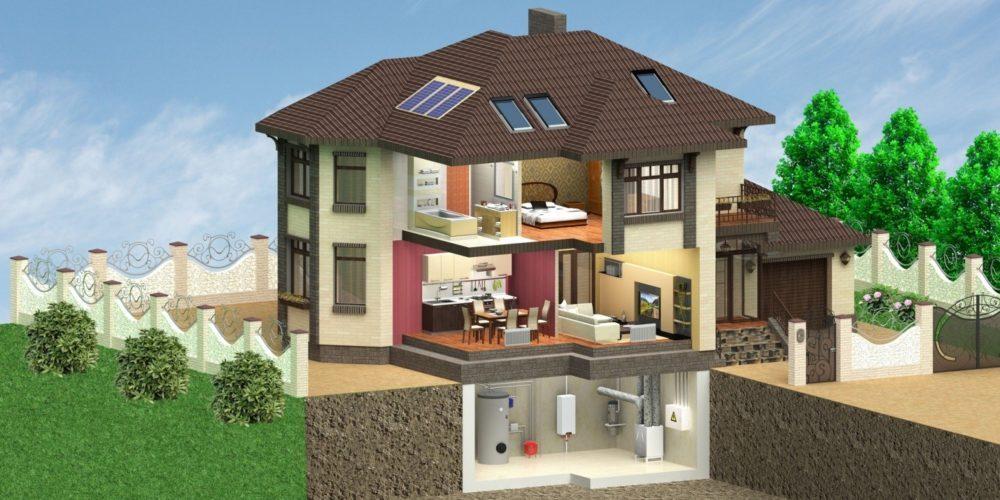Heating system diagrams
 In order for heating in your home to bring only warmth and comfort, and not create discomfort and problems, it is necessary to choose the right installation scheme. There are several heating system schemes:
In order for heating in your home to bring only warmth and comfort, and not create discomfort and problems, it is necessary to choose the right installation scheme. There are several heating system schemes:
- gravity;
- one-pipe system - "Leningrad";
- collector - beam;
- dead end;
- "Ride".
The most common and practical is a "ride" for large houses or a dead-end scheme for houses up to 200 m2.
Gravity flow scheme
Gravity heating is only installed in one- or two-storey houses with an attic where an expansion tank can be placed. It is not recommended to use it in three-storey buildings because of the inconvenience and complexity of installation. It will cost 2-3 times more than a pumping station.
"Leningradka"
One-pipe system - "Leningradka" is installed in large industrial premises, it is unprofitable and problematic to install it in the house. With such a scheme, the difference in temperature of the coolant in the supply and "return" is about 20ABOUTC. The liquid in the heating system cools quickly. It is necessary to increase the size of the radiators in the direction of movement of the coolant to compensate for heat loss.
Beam scheme
The collector or beam scheme consists of a collector, from which pipes to radiators extend into all rooms. The advantage of this scheme is the absence of floor connections. It is better to locate the collector symmetrically with respect to radiators, in the center of the house. Otherwise, it is necessary to balance this system by installing a more powerful pump and adjusting the coolant supply to the radiators. Another disadvantage is that pipes must be laid across the premises.
A passing scheme
In a passing scheme of the heating system, the sum of the lengths of all pipes supplied to each radiator is the same:
∑ (Pn+ On) = Const,
where Pn - delivery length from the boiler to the n-th radiator, On - the length of the return line from the boiler to the n-th radiator.
There is no need to artificially increase the system hydraulics. The downside is that the pipeline must be thicker; fittings of a larger diameter must be used than with the collector circuit of the heating system. Accordingly, this leads to an increase in the cost of the system.
Dead-end scheme
The shoulder or dead-end scheme is good when the house is small, up to 200 m2, and it is possible to make the "arms" of the same length or with approximately the same load on the radiators.
The advantage of a dead-end scheme and a "ride" is the use of fewer pipes and the ability to lay pipes around the perimeter of the house.
Give up the "drift" and "Leningrad", as these schemes will entail additional costs. Use a dead-end or passing scheme of the heating system.